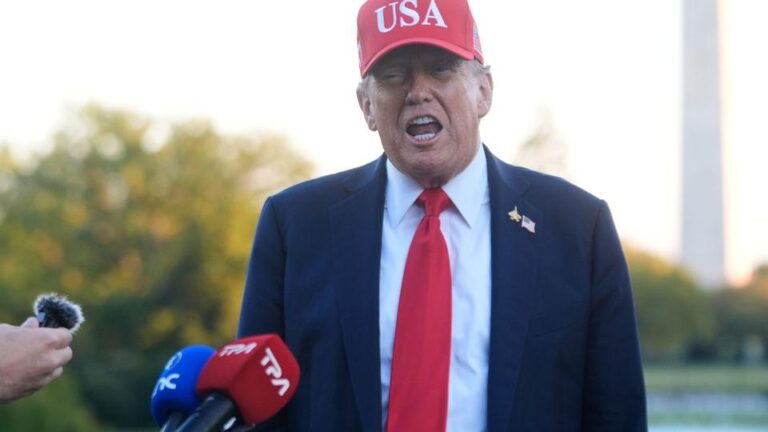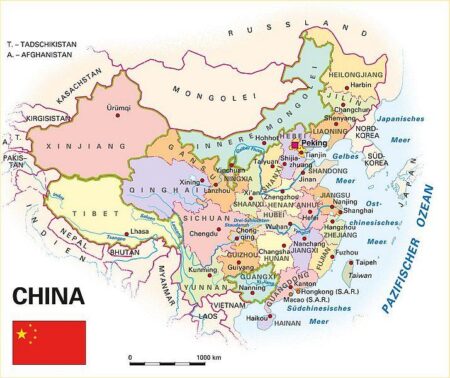Former U.S. President Donald Trump has reignited tensions within the North Atlantic Treaty Organization (NATO) by publicly criticizing Spain for its defense spending, suggesting that the country should be expelled from the alliance for failing to meet its financial commitments. Trump’s remarks, spotlighted in a recent Politico.eu report, underscore ongoing disputes over burden-sharing among NATO members and raise fresh questions about the future cohesion of the transatlantic security alliance.
Trump Calls for Expulsion of Spain from NATO Citing Defense Spending Shortfalls
Former U.S. President Donald Trump sharply criticized Spain, labeling the country as a defense spending “laggard”, and called for its expulsion from NATO. Citing Spain’s failure to meet the alliance’s 2% GDP defense spending target, Trump argued that such shortfalls undermine collective security and burden other member nations. His comments have reignited debate over the financial commitments within NATO, with some allies defending Spain’s contributions while others echo concerns about uneven burden-sharing.
Experts highlight that while Spain currently allocates approximately 1.1% of its GDP to defense, it has made efforts to increase its military budget amid rising geopolitical tensions. The table below outlines key NATO members’ defense spending as a percentage of GDP, illustrating the disparities that fuel Trump’s criticism:
| Country | Defense Spending (% of GDP) | Status |
|---|---|---|
| United States | 3.7% | Above target |
| Germany | 1.5% | Below target |
| Spain | 1.1% | Below target |
| France | 2.3% | Above target |
- Spain’s defense budget growth rate remains slower than NATO expectations.
- Other NATO allies are also under pressure to boost military spending.
- Calls for reforming NATO’s funding model are gaining traction.
Analysis of NATO Defense Budget Commitments and Alliance Cohesion Challenges
The ongoing debate over defense spending within NATO has once again come to the forefront, highlighting the persistent tension between member states over budget commitments and their implications for alliance solidarity. Former U.S. President Donald Trump’s recent suggestion to expel Spain-labeled a “laggard” due to its failure to meet the 2% GDP defense spending target-from NATO underscores how fiscal disagreements can challenge the cohesion of this critical military alliance. While the 2% guideline is a politically agreed-upon benchmark rather than a binding rule, it remains a potent symbol of burden-sharing and a litmus test for national commitment to collective defense.
Key issues fueling discord include:
- Uneven financial contributions among member states
- Divergent defense priorities and national interests
- Political narratives framing spending shortfalls as threats to alliance credibility
Spain’s defense budget, currently hovering below the NATO target, reflects broader economic and political constraints rather than a lack of commitment to collective security. The public debate around “laggards” risks deepening divisions, especially as some countries view defense spending targets through the prism of domestic politics rather than alliance needs. To maintain cohesion, NATO must navigate these challenges with a balance of pragmatic fiscal assessments and diplomatic sensitivity.
| Country | Defense Spending (% of GDP) | Contribution Status |
|---|---|---|
| United States | 3.5% | Above Target |
| Spain | 1.2% | Below Target |
| Germany | 1.6% | Below Target |
| France | 2.1% | At/Above Target |
Recommendations for Spain to Address Defense Funding and Maintain NATO Membership
To effectively tackle the challenge of defense funding while preserving its vital role within NATO, Spain should prioritize increasing its defense budget strategically over a multi-year plan. This approach not only aligns with the alliance’s 2% GDP spending guideline but also assures partners of Spain’s commitment to collective security. Moreover, Spain must enhance transparency and accountability in military expenditures, building public support and trust through detailed reporting and open communication. Strengthening defense industry partnerships domestically can simultaneously boost economic growth and facilitate more efficient resource allocation.
Additional strategic measures include:
- Modernizing the armed forces with a focus on interoperability within NATO frameworks.
- Engaging in joint training exercises to increase operational readiness and alliance cohesion.
- Expanding diplomatic efforts to communicate Spain’s defense priorities and contributions to fellow member states.
| Priority Area | Action | Expected Outcome |
|---|---|---|
| Budget Increase | Gradually raise defense spending to 2% GDP by 2028 | Meets NATO criteria and reassures allies |
| Transparency | Publish annual defense expenditure reports | Builds domestic and international trust |
| Military Modernization | Upgrade equipment focusing on NATO standards | Enhances interoperability and readiness |
Wrapping Up
As the debate over defense spending within NATO intensifies, former President Donald Trump’s call to remove Spain from the alliance underscores the persistent tensions among member states regarding burden-sharing. Spain, along with several other countries, has faced criticism for lagging behind the 2% GDP defense spending target, a metric Trump has consistently championed. Whether such rhetoric will influence NATO’s internal dynamics or prompt policy shifts remains to be seen, but the underlying disputes over military contributions continue to shape the future cohesion of the alliance.




